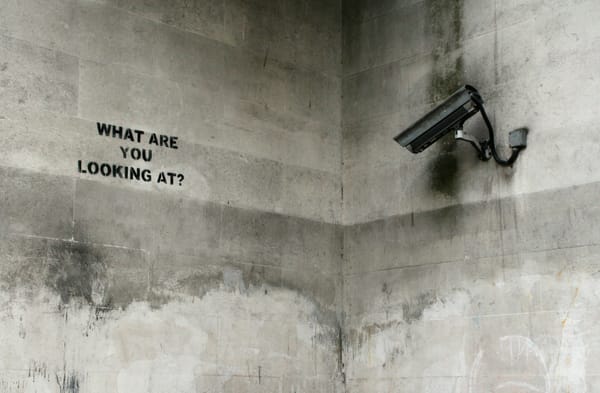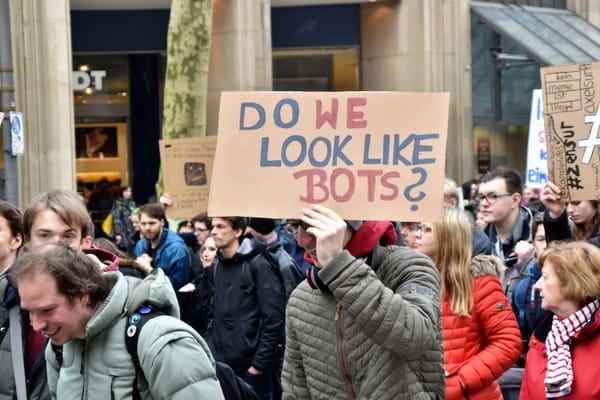Support, not surveillance: Getting return to the office right
"Workplace technology shouldn't be about control. When implemented transparently, it can enhance the employee experience."

Office use across Europe has returned to around 70% of pre-pandemic levels, prompting businesses to rethink how they bring employees back into physical workplaces. Many are investing in technology that encourages collaboration, streamlines operations and supports sustainability goals.
But a more divisive trend is also gaining traction: the rise of surveillance-style monitoring tools. From keystroke logging to badge swipe tracking, these systems allege greater productivity through oversight, but in reality, risk damaging employee trust. Often introduced with little transparency, such tools can create a culture of suspicion, deepen workplace divides and signal a shift from collaboration to control.
It therefore begs the question, what is the right way to draw employees back into the office? It’s not just about which technologies are used, but how, and whether they’re deployed to support employees or scrutinise them.
Trust and transparency must come first
Concerns around workplace surveillance are growing, fuelled by high-profile news stories and cultural narratives like the hit TV show Severance, which reflect deeper anxieties around employer control. In many cases, this concern stems less from the tools themselves and more from a lack of clarity. Too often, new systems are introduced with little explanation, creating space for suspicion and fear.
That said, there are some instances where the tools themselves are genuinely intrusive. Keyloggers, webcam monitoring and continuous screen recordings may offer data on employee activity, but they come at the cost of morale and trust - the very things needed to encourage people back into the office.
Workplace technology doesn’t have to be and shouldn't be about control over employees. When implemented transparently and with wellbeing in mind, it can enhance the employee experience. Consider thermal occupancy sensors: while they are technically a form of ‘monitoring’, they do so simply to adjust heating, lighting and cleaning schedules based on real-time data. The result is operational efficiency without invading employee privacy.
The difference lies not only in what the tech does, but how it’s framed. Even non-invasive tools can create tension if employees feel they are being kept in the dark. Open dialogue is essential. Employees should understand how new systems work, what data is collected and how it’s used.
Using tech to empower, not oversee
The right tools should remove friction, not add it. They should support employees to do their jobs better, without dictating how, when or where they work. Yet, nearly half of European employees feel their companies are failing to implement tools that genuinely support them.
Used thoughtfully, tech can eliminate repetitive admin, reduce scheduling headaches and improve access to shared resources. AI-powered transcription can eliminate note-taking and free people to be able to focus fully in meetings. Smart collaboration tools can bridge the gap between remote and in-person colleagues, while automated desk or room booking systems can help employees navigate hybrid setups with ease.
One helpful feature is ghost-booking detection, which automatically frees up unused meeting rooms, eliminating one of the most frustrating aspects of hybrid working. In the same spirit, live office busyness dashboards can help employees choose where to work or hold meetings, based on occupancy in real time.
None of these tools are about surveillance. These workplace technologies are about streamlining processes and making the day-to-day more seamless. The goal should be to create environments where technology recedes into the background, supporting work without interfering in it – which is how you create an office people want to be in.
Designing spaces with intent
Tech is only one piece of the “return to office” (RTO) puzzle. Office design remains crucial, but increasingly, physical design relies on digital technology.
Sensor data can reveal how spaces are actually used, including whether meeting rooms sit idle, which areas are overbooked and where foot traffic concentrates throughout the day. With these insights, companies can avoid expensive guesswork and reconfigure layouts to better reflect employee behaviour.
For instance, underused executive wings can be converted into team lounges, breakout zones or cafe seating. Congested zones can be eased through layout changes, while low-traffic areas can be repurposed into quiet focus spaces. Smart redesign isn’t just about cost savings. It’s about making the workplace more usable and more human.
For employees, these changes translate to tangible improvements. Real-time occupancy data helps teams find open rooms quickly. Air quality monitoring can trigger ventilation in stuffy areas. These aren’t just operational tweaks, but daily quality-of-life improvements that show employees the workplace was designed with their wellbeing – not surveillance - in mind.
The RTO is a cultural reset
The return to office isn't just a logistical shift; it's a cultural one. Businesses that prioritise trust, transparency and employee-first design will be far better positioned to re-engage their workforce. When workplace tech is used to enhance rather than oversee, the office can become a destination - not a demand.
Nathan Thomas is Director of Innovation at Ricoh Europe




